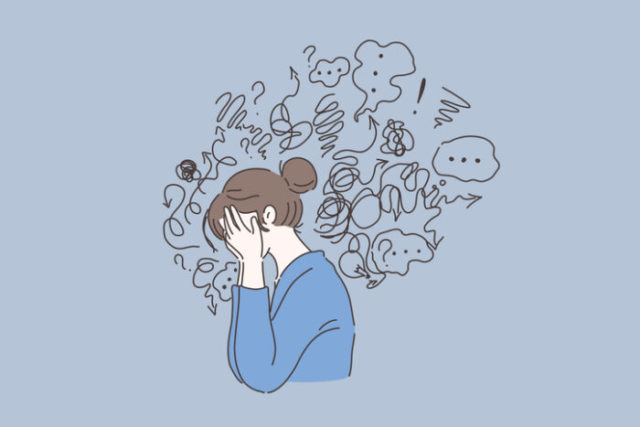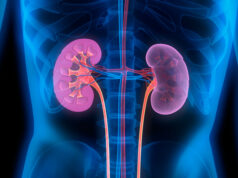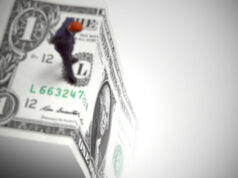
Throughout Sage Therapeutics’ development of zuranolone, the biotech has been consistent in the messaging for its experimental depression drug: Whereas existing therapies may require weeks to work and can bring dangerous side effects, zuranolone starts working quickly and is safer. About 18 months after the drug failed a pivotal study, the company on Tuesday reported data from a new clinical trial showing that the drug beat a placebo. CEO Barry Greene believes the early results warrant a new discussion with the FDA.
“When used, zuranaolone can get patients better faster and keep them better longer, unlike anything on the landscape today,” Greene said, speaking on a Tuesday conference call.
The “better longer” part is raising some questions. The drug showed a quick onset of effect in the major depressive disorder clinical trial, and it beat a placebo as measured according to a rating scale used to assess depression, which was the main goal of the study. But zuranolone’s effect waned over time. The drug also did not beat a placebo on a key secondary goal. Investors didn’t like those results and the stock price of Cambridge, Massachusetts-based Sage fell throughout the day before closing at $58.80 per share, down more than 19% from Monday’s closing price.
Zuranolone is a positive allosteric modulator of GABAA receptors, the same type of drug as Sage’s first FDA-approved product, brexanolone. That post-partum depression drug, which is marketed as Zulresso, is given as a 60-hour continuous infusion and it’s not a major source of revenue, producing $6.7 million in 2020 sales. Zuranolone comes in capsule form, and it’s the more important product for Sage. Capsules are much more convenient than infusions and offer the opportunity to reach more patients. Furthermore, major depressive disorder is just the first of several psychiatric applications Sage believes the drug could treat.
The ability to address several psychiatric indications with a more convenient formulation gives zuranolone blockbuster potential. That’s a key reason why Biogen signed on as a development partner last November, committing $1.5 billion up front to collaborate on that drug as well as an experimental essential tremor treatment, SAGE-324. In the U.S., Sage and Biogen are sharing in the development and commercialization of products containing those drugs. Biogen holds rights to commercialize products from the partnership outside of the U.S., except for Japan, Taiwan, and South Korea, where Shionogi holds the rights.
The major depressive disorder study that failed in 2019 tested two doses of zuranolone, 20 mg and 30 mg, against a placebo. The drug was taken once a day for 14 days. The results showed the drug did not beat a placebo according to the Hamilton Rating Scale for Depression (HAM-D), a widely used psychiatric assessment, at day 15. When the company reported the results, it noted that about 9% of those in the treatment arm had no measurable drug concentration—suggesting that they were not compliant with instructions to take the drug. Excluding those patients, Sage said that the drug showed statistical significance.
Sage did not give up on zuranolone. The company reached agreement with the FDA on three separate Phase 3 studies; a positive readout in any one of them could support another filing seeking approval, Greene said. Tuesday’s data readout was for the first one. Called WATERFALL, the clinical trial tested a higher dose, 50 mg, and it enrolled more people—543 overall. Patients were randomly assigned to take zuranolone or a placebo for 14 days. The study’s main goal was the same as the prior Phase 3 study: assess the change in HAM-D scores from baseline at day 15.
According to the results, the zuranolone group showed an average change of -14.1 points according to the scale, beating the average -12.3 point change reported in the placebo group. But scores were also taken over the course of the 14-day treatment period. The greatest difference between the treatment group and the placebo group was at day 3. Over the course of the period, that difference narrowed until the final measure at day 15.
A secondary goal of the study assessed zuranolone using a different scale, Clinical Global Impression-Severity of Illness. On that measure at day 15, the average change from baseline for the Sage drug was -1.8; for the placebo group, the change was -1.6. The difference was not enough to be statistically significant.
The two other Phase 3 studies for zuranolone in major depressive disorder are designed differently. CORAL is assessing the 50 mg dose of the drug, given over two weeks alongside a standard antidepressant. Meanwhile, the SKYLARK study is testing zuranolone in post-partum depression. Yet another Phase 3 study, SHORELINE, is following major depressive disorder patients for up to one year after two weeks of treatment with the drug. After starting the study with a 30 mg dose, the company last year amended the clinical trial to allow already enrolled patients to receive the 50 mg dose. The company also added a new group of patients that received the 50 mg dose from the start. SHORELINE might be the best bet to find out how well zuranolone works over time.
Greene said that it will be important to have multiple zuranolone dose options for patients. If the side effects of a higher dose prove intolerable, physicians can prescribe a lower dose. In the Phase 3 results announced Tuesday, the most common side effects in the treatment group included drowsiness, dizziness, and headache.
Though Greene emphasized that the company believes that the positive readout of WATERFALL will support a filing seeking regulatory approval, he stopped short of saying that the company would make such a filing. He said the company plans to meet with the FDA to discuss the next steps for the drug. Sage expects that the other zuranolone Phase 3 studies will report preliminary data in the remainder of the year.
Photo: Aleksei Morozov, Getty Images








